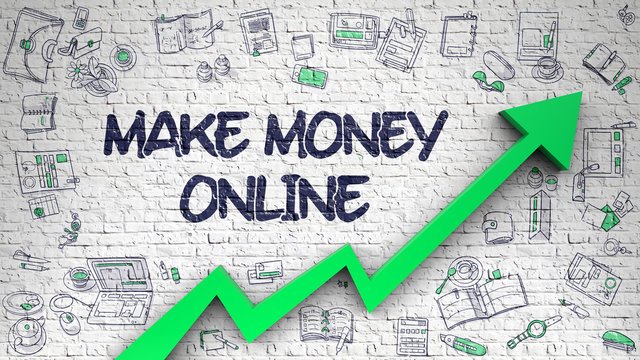
Blogging has become a popular avenue for expressing creativity, sharing knowledge, and even earning income online. If you’re looking to start a blog without any initial investment, this comprehensive guide will walk you through the essential steps to launch your blog for free. Whether you’re a beginner or seasoned internet user, follow these steps to create your platform and share your voice with the world.
Why Start a Blog?
Blogging offers numerous benefits:
- Express Yourself: Share your thoughts, ideas, and expertise on topics you’re passionate about.
- Build a Community: Connect with like-minded individuals and build a loyal audience.
- Monetize Your Passion: Earn income through advertisements, affiliate marketing, sponsored posts, and more.
- Enhance Skills: Improve writing, digital marketing, and technical skills in a practical setting.
Step-by-Step Guide to Starting a Blog for Free
1. Choose a Blogging Platform
Selecting the right platform is crucial for your blog’s success. Here are popular options for starting a blog for free:
- WordPress.com: Offers a user-friendly interface with free hosting and domain options.
- Blogger: Owned by Google, Blogger provides easy integration with other Google services.
- Medium: Ideal for writers focusing on content rather than technical aspects, with built-in readership.
2. Pick a Niche or Topic
Identify a niche or topic that aligns with your interests, expertise, and target audience. Consider:
- Passion: Choose a topic you’re passionate about to maintain motivation and engagement.
- Audience: Research potential readership and their interests to tailor your content effectively.
- Competition: Analyze existing blogs in your niche to find a unique angle or gap you can fill.
3. Create and Customize Your Blog
Once you’ve chosen a platform and niche, follow these steps to set up your blog:
- Sign Up: Register an account on your chosen blogging platform (e.g., WordPress.com, Blogger).
- Choose a Domain: Select a domain name that reflects your blog’s theme or your personal brand.
- Design Your Blog: Customize your blog’s appearance with themes, colors, fonts, and layout options provided by the platform.
- Set Up Essential Pages: Create pages such as About Me, Contact, and Privacy Policy to establish credibility and facilitate interaction with your audience.
4. Produce High-Quality Content
Compelling content is key to attracting and retaining readers:
- Create a Content Calendar: Plan and schedule topics to maintain consistency in publishing.
- Write Engaging Posts: Craft well-researched, informative, and engaging articles that resonate with your audience.
- Incorporate Multimedia: Enhance your posts with images, videos, infographics, and other visual elements to increase engagement.
- Optimize for SEO: Use relevant keywords, meta descriptions, and tags to improve visibility and attract organic traffic from search engines.
5. Promote Your Blog
Increase your blog’s visibility and attract readers through various promotion strategies:
- Social Media: Share your blog posts on platforms like Facebook, Twitter, Instagram, LinkedIn, and Pinterest.
- Guest Blogging: Contribute guest posts to other blogs in your niche to reach new audiences and build backlinks.
- Networking: Connect with influencers, bloggers, and industry experts through online communities, forums, and events.
- Email Marketing: Build an email list and send newsletters to subscribers with updates, exclusive content, and promotions.
6. Engage with Your Audience
Build a loyal readership by fostering interaction and responding to feedback:
- Respond to Comments: Encourage discussions by replying to comments and addressing reader questions.
- Encourage Sharing: Include social sharing buttons on your posts to facilitate content sharing.
- Create Community: Host contests, polls, Q&A sessions, and live chats to engage with your audience and foster a sense of community.
7. Monetize Your Blog
Explore ways to generate income from your blog once you’ve established a steady readership:
- Affiliate Marketing: Promote products or services related to your niche and earn commissions on sales made through your affiliate links.
- Ad Networks: Join ad networks like Google AdSense to display targeted ads on your blog and earn revenue based on clicks or impressions.
- Sponsored Posts: Partner with brands or companies for sponsored content opportunities where you promote their products or services in exchange for payment.
- Sell Products or Services: Create and sell digital products (e.g., e-books, courses) or offer consulting services directly through your blog.
8. Monitor and Grow Your Blog
Track your blog’s performance and continuously improve to achieve your goals:
- Analytics: Use analytics tools (e.g., Google Analytics) to monitor traffic, user behavior, and demographic insights.
- SEO Optimization: Regularly update and optimize your content based on SEO best practices to improve search engine rankings.
- Stay Updated: Keep abreast of industry trends, algorithm changes, and reader preferences to adapt your strategy accordingly.
Conclusion
Starting a blog for free is a rewarding journey that allows you to share your passions, connect with others, and potentially earn income online. By following this step-by-step guide, you can establish your platform, create valuable content, engage with your audience, and explore monetization opportunities effectively. Whether you’re blogging as a hobby or aiming to build a profitable online business, investing time and effort in crafting quality content and promoting your blog will help you achieve your blogging goals. Embrace creativity, persistence, and a commitment to learning, and enjoy the fulfilling experience of blogging in the digital age.

